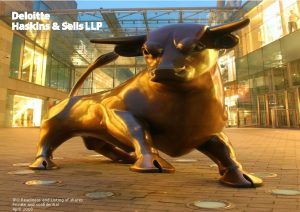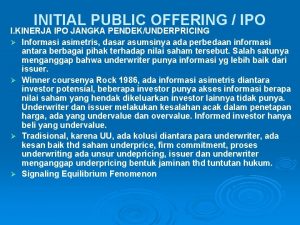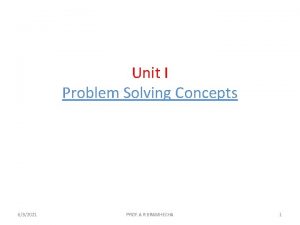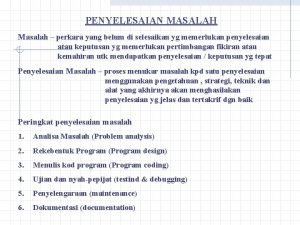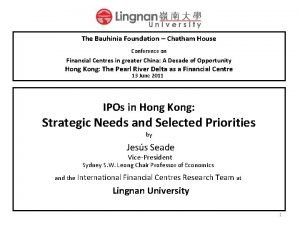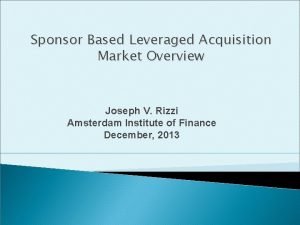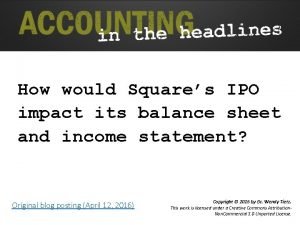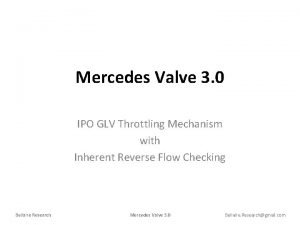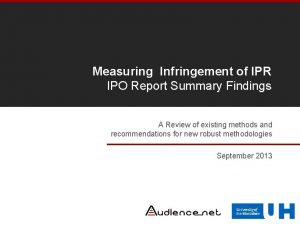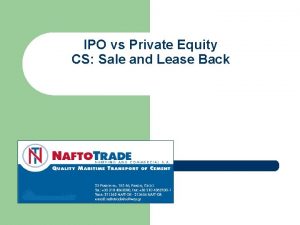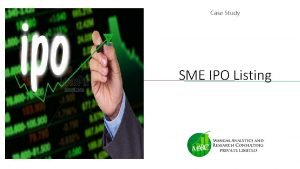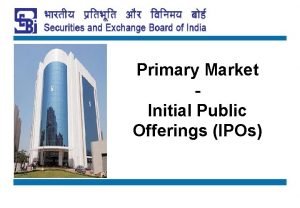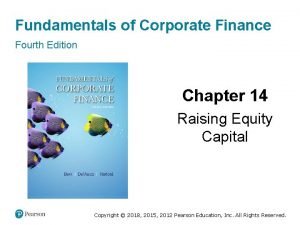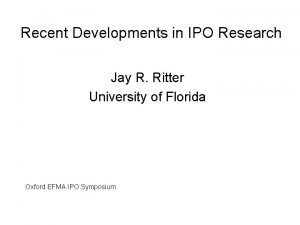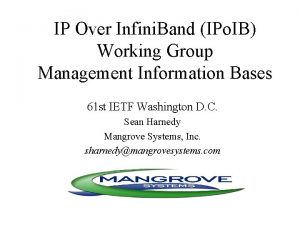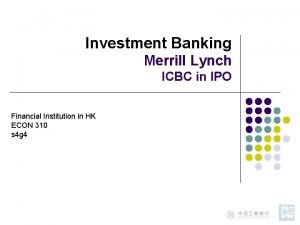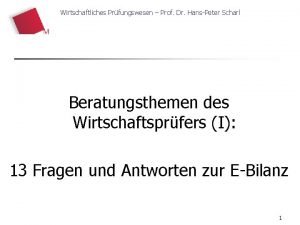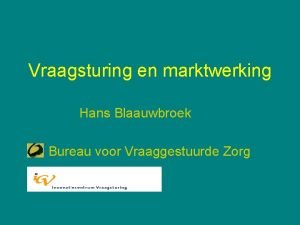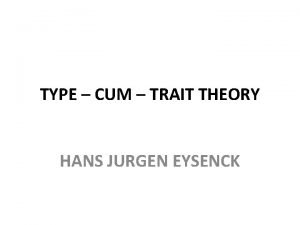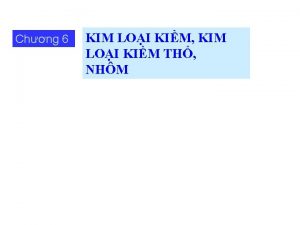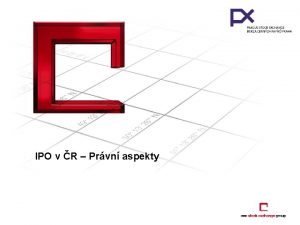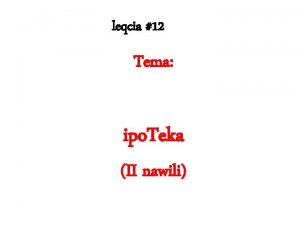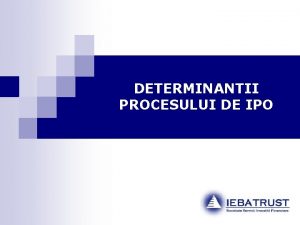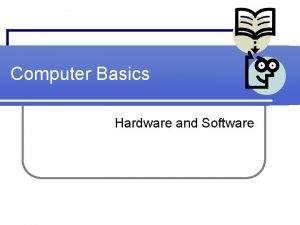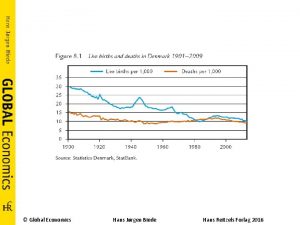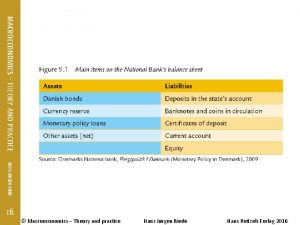IPO Why IPO IPO IPO 4 Hans Kim


























































- Slides: 58




IPO Ø Why IPO ? Ø IPO 절차와 비용 Ø 해외시장 IPO 4 Hans Kim

IPO Why IPO ? 5 Hans Kim

IPO_ Why IPO? _ Motives of IPO q The motives of IPO (Dr. Henry Servaes, 2001) Ø Ø Company needs new financing Current sources of financing have been exhausted (Bank Financing, Venture Capital) Ø Founders want to diversify and cash out partially Ø The increased liquidity in Company stock increases its value Ø Ø The liquidity may also make it easier to do further acquisition; acquisition currency Venture Capitalist wants cash out v v Ø In the western market, often Venture Capitalist does not sell out and makes distribution to partners after IPO What about in Korean market? Golden Bridge의 대우부품사례 Take advantage of overvaluation in market 6 Hans Kim

IPO_ Why IPO? _Case of IPO motives ¨ Case of “acquisition currency” and “overvaluation” in the market after IPO 글로비스 (086280) 7 Ø 현대차 물류 전문업체 Ø 현대차 그룹의 경영권 상속을 위한 상장이라는 견해? Hans Kim

IPO_ Why IPO? _Disadvantage of IPO q Why MNCs in Korea tend to go back to Private company after acquiring public company ? q Going public is a costly process Ø Ø q Cost of IPO v North America 7% v Europe 3. 59% (931 IPOs 1992 – 1999) v Asia Pacific 3. 09% (430 IPOs 1992 – 1999) v Korea ? ? Under pricing 예컨대, 시장시초거래가 117$ 공개가 100$ 증권사 비용 지불 이후 가격 93$ 기타 비용 지불 이후 가격 90$ = 회사가 실제 조달한 몫 = 결국, 시초가 117$ 보다 27$ 이나 적은 가격 Ø Cost of managing the status of public company Ø Cost of Human resources for IR activity Ø Management cost of maintaining the share price properly Vulnerable to control contests Ø Increased disclosure Ø Diversified shareholder structure 8 Hans Kim

IPO 절차와 비용 9 Hans Kim

KOSPI Information 10 Hans Kim

Lead Manager’s role 11 Hans Kim

Listing requirement and issues § Major listing issues § Listing requirement & issues 12 Hans Kim

Listing Requirement & Issues 13 Hans Kim

Listing Requirement & Issues 14 Hans Kim

Listing Requirement & Issues 15 Hans Kim

Listing Requirement & Issues 16 Hans Kim

Listing Requirement & Issues 17 Hans Kim

Listing Requirement & Issues 18 Hans Kim

Listing Requirement & Issues 19 Hans Kim

Listing Schedule & Cost q 무상증자의 의의 20 Hans Kim


Listing Schedule & Cost q 무상증자의 의의 22 Hans Kim








IPO 해외시장 IPO 30 Hans Kim

1 Overview 31 Hans Kim

Overview of Capital Markets A Share Private Equity Domestic B Share Listing Big Red Chip Small & Medium Board Company Direct Listing Hong Kong Overseas Big H Share GEM Small Red Chip Singapore Listing Indirect Listing (Reverse Takeover) Main Board United Kingdom Small H Share United States 32 Hans Kim

Key considerations for selecting listing location q In selecting a listing location, companies should consider corporate strategy and how the listing location would impact corporate image Listing requirements / processing times q What’s the likelihood of a successful IPO? Can it be completed in a relatively short time horizon? Valuation / PE / Fund raised q Is the valuation fair (especially compared to other similarly listed companies)? Is the amount raised enough to fund corporate development needs? q Cost of raising equity (underwriting fee, listing fees, lawyers, auditors, evaluation, PR, printing costs), and cost of maintaining a listing, including internal controls, financial reporting and satisfying local regulations q How easy is it to access the capital markets through a follow-on offering and the usual amount of a follow-on offering Growth strategy / reputation Cost of listing Follow on offerings 33 Hans Kim

International markets comparison AIM HK Main Board GEM Singapore Stock Exchange NASDAQ Financial requirements None High Low Medium High Operational requirements None High Medium High Minimum market capitalization None US$24 m (HK$200 m) US$5. 9 m None US$8 m free float Time required to list 3 mth – 6 mth – 9 mth 6 mth 12 mth Listing cost (ex-commission) US$0. 45 m (GBP 0. 25 m) US$1. 2 m (HK$10 m) US$0. 75 m (S$1. 25 m) US$0. 6 m Monthly liquidity (Turnover / market capitalization) in 2004 7% 77% 3% 14% 24% Number of Chinese companies listed 15 173 45 88 24 (8 IPOs, 7 reverse takeovers) Source: Pw. C, BDA research Data as of December 2005 34 Hans Kim

2 Hong Kong Listing 35 Hans Kim

Hong Kong listing (Main Board) – listing requirements Financial capability q Candidate must fulfill one of the three tests in order to satisfy the financial attributes requirement: q Profit: Not less than US$2. 6 m (HK$20 m) for the most recent year; AND q Profit: Not less than US$3. 8 m (HK$30 m) in aggregate for the 2 preceding years Market capitalization / revenue test q Market cap: Not less than US$513 m (HK$4 bn) at the time of listing; AND q Revenue: Market capitalization / revenue / cash flow less test q Market cap: Not less than US$256 m (HK$2 bn) at the time of listing; AND q Revenue: Not less than US$64 m (HK$500 m) revenue from principal activities for the most recent financial year; AND q Cash flow: Not financial years Profit test Not less than US$64 m (HK$500 m) revenue from principal activities for the most recent financial year; AND Ownership and management continuity q Maintain a trading record period of not less than 3 financial years; AND q Demonstrate management continuity during the 3 -financial-year trading record; AND q Demonstrate ownership continuity and control for at least the most recent financial year of the trading record * Listing applicant under the market capitalization / revenue test (above 2 nd one) is not subject to the management and ownership continuity requirement Maintenance requirements q Minimum market capitalization of: US$24 m (HK$200 m) q Minimum public float: 15% - for market capitalization between US$513 m (HK$4 bn) and US$1. 3 bn (HK$10 bn) 25% or US$12. 8 m (HK$50 m), whichever higher - for market capitalization below US$513 m (HK$4 bn) q Minimum number of shareholders: 300; 1, 000 – for applicant under market capitalization / revenue test (above 2 nd one) 36 Hans Kim

Hong Kong listing (Main Board) – pros and cons Cons Pros High listing cost Geographical proximity, common language and common culture q The average IPO cost (ex-commission) is about US$1. 2 m (HK$10 m). It is expensive relative to other stock exchange, such as US$750, 000 for Singapore Stock Exchange and US$450, 000 for AIM q Buying exiting listed company is another way of listing. Average “shell” price is approximately US$6 m (HK$50 m), which is also expensive relative to other markets Traditional fund raising platform for China q Since Qingdao Brewery listed in Hong Kong tock Exchange in 1993, Hong Kong Stock Market has become the most important offshore listing platform for Chinese companies. There are now over 170 Chinese companies (H share and red chip) listed in Hong Kong q Chinese companies are now a major part of the Hong Kong Main board. In 2005, Chinese companies contributed 30% of market capitalization and 40% of market turnover respectively q Experience and market size attracts good broker coverage. Concentration of institutional investors and fund houses also ease fund raising Relatively high entry barrier q Listing on the Main Board requires fulfillment of certain financial thresholds not required in other stock listings Relatively long listing procedures Good liquidity and strong post IPO fund raising capability q Market liquidity makes secondary listings possible and reduces the need for dual listings q In 2004, turnover / market capitalization ratio was 77%, compared with 7% for AIM and 9% for SESDAQ (Singapore Stock Exchange) q Between 2001 and 2005, over 54% of fund raised by red chips was from secondary offerings 37 q In light of the recent corporate scandals, Hong Kong Stock Exchange has toughened the approval process for IPOs q Listing procedures now takes about 6 -9 months to complete, compared to 3 -6 months for AIM Hans Kim

Hong Kong listing (GEM) – listing requirements Length of business operation q Candidate must fulfill either period of active business operations: 24 months 12 months q q No minimum financial requirement q Revenue: Not less than US$64 m (HK$500 m) in the last 12 months; OR q Assets: Not Less than US$64 m (HK$500 m) in the last financial period; OR q Market cap: Not less than US$64 m (HK$500 m) with not less than US$19 m (HK$150 m) held by the public Exemptions may be granted for mining companies and newly formed project companies, such as major infrastructure projects, which can have shorter trade records Ownership and management continuity q Must be under substantially the same management and ownership over the period of active business operations Maintenance requirements q Minimum of market capitalization: US$5. 9 m q Minimum public float: 20% or US$128 m (HK$1 bn), whichever higher - for market capitalization exceeding US$513 m (HK$4 bn) 25% or US$3. 8 m (HK$30 m), whichever higher - for market capitalization less than US$513 m (HK$4 bn) q Minimum number of shareholders 300 – for market capitalization exceeding US$513 m (HK$4 bn) 100 – for market capitalization less than US$513 m (HK$4 bn) q Financial reporting Quarterly 38 Hans Kim

Hong Kong listing (GEM) – pros and cons Cons Pros High listing cost Geographical proximity, common language and culture Relatively low entry barrier q q Similar to Hong Kong Main Board, listing expense is relatively expensive, approximately US$1. 2 m in total q As market capitalization of GEM listed companies are relatively small, listing cost can comprise up to 20% of total fund raised GEM does not have specific financial requirement for listing candidates; the same is true for other growth markets such as AIM and SESDAQ Poor liquidity Stepping stone to Hong Kong Main Board q Good GEM listed companies usually swap to Main Board after accumulating 3 -year profit record post GEM listing q The first, second and sixth largest GEM listed companies swapped to the Main Board. Altogethere are over 10 GEM listed companies that have swapped to the Main Board q Liquidity of GEM is very poor, and deteriorating. Turnover / market capitalization ratio dropped from 6% in 2002 to 3% in 2004 compared to 7% for AIM and 9% for SESDAQ q Poor liquidity results in difficulty of post IPO fund raising. Since 1999, post IPO only raised US$129 m for Chinese companies Relatively long listing procedures 39 q In light of the recent corporate scandals, Hong Kong Stock Exchange has toughened the approval process for IPOs q Listing procedures now takes about 6 -9 months to complete, compared to 3 -6 months for AIM Hans Kim

3 Other listing options 40 Hans Kim

Singapore listing – listing requirements Financial capability q Candidate must fulfill one of the three tests in order to satisfy the financial attributes requirement: Profit test (1) Profit test (2) US$48 m least Market capitalization test q Profit: Cumulative pre-tax profit of at least US$4. 5 m (S$7. 5 m) for the last 3 years; AND q Profit: Pre-tax profit not less than US$0. 6 m (S$1 m) in each of these 3 years q Profit: Cumulative pre-tax profit of at least US$6 m (S$10 m) for the latest 1 or 2 years q Market cap: At share price Trading moratorium q Promoters’ entire shareholding at the point of listing for first 6 months after listing (above 1 st and 2 nd options) q Promoters’ entire shareholding at point of listing for first 6 months after listing; and at least 50% for the next 6 moths (above 3 rd option) Other listing requirements q Minimum public float: 12% - for market capitalization larger than US$595 m (S$1 bn) 15% - for market capitalization between US$238 m (S$400 m) and US$595 m (S 1 bn 0 20% - for market capitalization between US$178 m ($S 300 m) and 238 m (S$400 m) 25% - for market capitalization less than US$178 m (S$300 m) q Minimum number of shareholders: 1, 000 - primary listing 2, 000 - secondary listing q Financial position No shortfall in working capital All debts owing by directors, substantial shareholders and companies controlled by directors and substantial shareholders must be settled 41 Hans Kim

Singapore listing – pros and cons Cons Pros Deteriorating market reputation Geographical proximity, common language and culture q While Hong Kong and NASDAQ have increased scrutiny of IPOs following corporate scandals, Singapore has become more lax to attract Chinese companies leading to increased corporate scandals and loss of market confidence q A notorious example is China Aviation Oil, which went bankrupt due to crude oil future speculation. It was once held up by SESDEQ as a model of corporate governance. q The loss of reputation has directly impacted the liquidity of the market. Its liquidity is only about one-fifth of the Hong Kong Main Board Relatively low entry barrier compared with HK Main Board q Singapore requires lower profit or market capitalization for listing q Popular with companies that don’t want to list on growth markets like AIM or GEM, but are barred from Hong Kong Main Board due to its high financial requirements Ease of secondary offering procedures q Secondary offerings are usually completed in 2 -4 weeks 42 Hans Kim

NASDAQ Listing – listing requirements Financial capability q Candidate must fulfill one of the three tests in order to satisfy the financial attributes requirement: Marketplace Rule 4420(a) Marketplace Rule 4420(b) Marketplace Rule 4420(c) q Market cap: At least US$8 m for public shares; AND q Equity: At least US$15 m; AND q Profit: At least US$1 m pre-tax income q Market cap: At least US$18 m for public shares; AND q Equity: q Market cap: At least US$20 m for public shares; AND q Assets: At least US$75 m; OR q Revenue: At least US$75 m; OR q Market cap: At least US$75 m At least US$30 m Alternative – NASDAQ Small Cap Market q Market cap: least At. US$5 m for public share; AND q Equity: q Market cap: At least US$50 m; OR q Profit: At least US$5 m; OR At least US$750, 000 from continuing operations, in last fiscal year or 2 of the last 3 fiscal years Ownership and management continuity q 2 years operating history is required for listing by fulfilling Marketplace Rule 4420(b) q 1 year operating history is required for listing on the NASDAQ Small Cap Market. It can be waived if the market cap is greater than US$50 m Maintenance requirements q Continuing listing requirements: Equity > US$10 m + publicly held share value > US$5 m + min US 1 share price; OR Market cap/assets/revenue > US$50 m + publicly held share value > US 15 m + min US$1 share price q Market maker: 3 market makers are required Marketplace Rule 4420(c): 4 market makers are required q Minimum number of shareholders: 400 each holding 100 or more shares NASDAQ Small Cap Market: 300 each holding 100 or more share q Sarbanes-Oxley Act: Substantial requirements 43 for corporate governance Hans Kim

NASDAQ Listing – pros and cons Cons Pros Heavy compliance cost The largest growth market with good liquidity q NASDAQ is the largest growth market in the world. Its capitalization reached US$3, 153 bn in 2004, which is 70 x AIM and 346 x GEM q In 2004, monthly turnover / market capitalization ratio was 24%, compared to 7% for AIM and 9% for SESDAQ q These market characteristics favor large scale fund-raising Of the 23 Chinese listed NASDAQ companies, many are tech-concept stocks, including: Baidu, Netease, Sohu, Sina, Asia Info, UT Starcom, China. com and Kongzhong. com q While Asian stock markets are less keen on tech concept stocks, NASDAQ provides a platform and relatively higher PE for these companies Sarbanes Oxley (SOX) has placed a heavy burden on US listed companies q According to research by Ae. A, for a company with revenue less than US$100 m, SOX compliance can cost more than 2. 5% of revenues High litigation risk Friendly to high-tech concept stocks q q q Out of 23 Chinese listed companies, 7 have been sued q Litigation costs and compensation/fine can pose a severe threat to the financials of the listing company Relatively high continuing listing requirement q The continuing listing requirement is clearly far stricter than other growth markets, especially the minimum market cap and share price q The number of companies listed on NASDAQ have decreased due to strict continuing listing requirements q From 1995 to 2002 there were 5, 143 NASDAQ delistings compared to 1, 497 NYSE delistings and 712 AMEX delistings Long listing procedures q 44 Listing on NASDAQ normally takes 1 year to complete, which is more than twice the time required for AIM listings Hans Kim

AIM – listing requirements AIM has neither financial nor operational requirements for listing candidates Advisors required to list on AIM q q q NOMAD (Nominated advisor) q NOMAD warrants to the Exchange that the candidate is appropriate for joining AIM q NOMAD has to be retained throughout the company’s life in the market Broker q A securities house and member of the LSE q It is the broker’s responsibility to gauge the level of interest in the company’s shares and advise on pricing, and place them with investors Accountant q q Corporate lawyer q q Review and audit the candidate’s finances Draw up all agreements surrounding the flotation. They are also responsible for the due diligence process – verifying statements in the prospectus and other documents Financial PR company q Responsible for promoting the company, helping creating the analyst presentation, afterwards advising on investor relations strategy Documents required to list on AIM q Prospectus q Due diligence report q Analyst presentation q 10 day announcement – the form is completed by the NOMAD and sent to the AIM, at least 10 clear business days prior to admission of the new company. AIM then disseminates this over the Regulatory News Services, the LSE’s official news outlet, and checks for any material objection for the listing q Declaration by NOMAD q Application form signed by the company 45 Hans Kim

AIM – pros and cons AIM is a new market for Chinese companies with the first listing in October 2004, but is rising in popularity Cons Pros Geographical disadvantage Very low entry barrier AIM has no financial or operational requirements for listing q London is geographically far from China. popularity of shares Simple listing procedures and short listing process q NOMAD are mostly western corporate finance companies. Language and cultural differences may lead to difficulty, and result in the need for additional advisors q q LSE relies on the NOMAD to warrant the listing company, thus simplifying the listing procedures. Admission documents are only pre-vetted by the NOMAD q After appointment of the NOMAD, it normally takes only 3 -6 months to get listed on AIM Lack of popularity in Greater China area Low listing cost q Culture unfamiliarity may affect Listing costs on AIM is about US$450, 000 (GBP 0. 25 m, ex-listing commission), compared to (US$1. 2 m) listing in Hong Kong and (US$750, 000) in Singapore q AIM was set up in 1995, but there are now only 17 Chinese companies listed there; Chinese listings only started in October 2004 q Lack of popularity in China has reduced some of the advantages of being listed, such as reputation enhancement, however this is improving as AIM hosts road shows etc to raise its profile Relatively strong liquidity among growing markets q Monthly turnover / market capitalization ratio for AIM was 7% in 2004, improving from 3% in 2002. AIM index was up by 20. 4% in 2004 q It is far more attractive than 3% of GEM and approaching 9% of SESDAQ Flexible trading q No minimum public shareholdings q In most cases, no prior shareholder approval is required for transactions 46 Hans Kim

Chinese enterprises listed on AIM Source: Bloomberg, BDA research Data as of 10 h May 2006 47 Hans Kim

Key Advantage of LSE AIM - Normally 3 year trading record required - No trading record requirement - Minimum 25% shares in public hands - No minimum market cap. - Prior shareholder approval required for substantial acquisitions and disposals - No minimum shares to be in public hands - No prior shareholder approval for transactions - Minimum market capitalization 48 - Nominated adviser required at all times - SME Business 에 적합 Hans Kim



AIM, NASDAQ, KOSDAQ – 상장및 유지 비용 51 Hans Kim

Market 비교 2005 년 기준 2006 년 10월 25일 기준 52 Hans Kim

AIM _ New Touch Guideline for AIM Nomads_Feb 19, 2007 q. From The Times q. February q. LSE q. The wording of a key declaration to be published on the front page of admission documents, assigning to nomads the responsibility for the “appropriateness” of AIM applicants, is expected to be tempered. 19, 2007 draws up new tough guideline for AIM nomads q. The London Stock Exchange is expected to publish strict guide-lines this week for advisers bringing companies to AIM, the junior London market. Baty, a nominated adviser and assistant director of corporate finance at Hanson Westhouse, said: “We don’t expect the new rules to be too prescriptive. The whole point of AIM is that it is regulated by the nomads. The spirit of the rulebook is that the nomad uses their judgment. ” q. In q. Although q. Elizabeth q. Richard Colman an attempt to make the industry more accountable, the first tangible rulebook for nominated advisers, or nomads, will demand that more thorough due diligence be carried out on AIM applicants are required at present to show legal and accounting diligence, the rulebook will require nomads to prove to AIM regulators a knowledge of the company and its directors. This will present a particular challenge in emerging markets such as China and India, and the crackdown is expected to provide a boon to business intelligence services. q. Proposed rules include the demand for strict background checks on all directors and site visits to the headquarters of non. UK companies. Failure to comply with the rules could lead to a nomad being banned from AIM. The crackdown follows a string of profit warnings involving AIM-listed companies and criticism from the US about so-called lax standards. q. Russ Corn, a consultant at Diligence, an intelligence gathering and risk management firm, has noticed an increase in business. He said: “There is a feeling among the nomads and the brokers that they will be required to look at every single director that they’re bringing to market and that they validate and check the directors’ declarations and the essential information that they’re given. Up until now the nomad could get away with taking it at face value. Now they’re going to have to do reputation and integrity profiling. ” q. Under the present AIM structure, nomads are not subject to hard-andfast rules. “This is an attempt to show the world that the AIM is taking a tougher approach, ” one nomad said. q. However, many larger nomads said they already complied with the “best practice” standard set out in the rulebook. The rules are expected to weed out smaller nomads which “rubber-stamp” applicants’ admission documents and neglect to stay in touch with the company after listing. q. Several nomads welcome the rules, saying they will provide an impetus to tell clients that they must do background checks, in circumstances where it may have caused offence. Previously, many nomads carried out such checks without the applicants’ knowledge. 53 Hans Kim

4 Private placement 54 Hans Kim

Private placement – overview Overview q Private placement is a broad term that refers to any type of equity investment in an asset in which the equity is not freely tradable on a public stock market q There are two types of private placement investors; financial and strategic q Financial investors, including venture capital, are an important source of funding, especially for younger companies that do not have access to the public financial markets q Strategic investors provide management and technology know-how and capital Private placement Financial investors (private equity) Who they are Strategic investors (strategic stake) q Venture capital q Strategic partners (foreign or domestic) q Buyout funds q q Funds of funds, etc. Upstream, downstream or otherwise related companies q Companies looking to diversify q Gain access to new markets q Ensure steady supply or off-take or other benefits from equity ownership q Diversify earnings, participate in other industries q Good financial returns on their equity investment and typically exit around 5 years What they want 55 Hans Kim

Financial investors – overview Sources of private equity (by number of funds) Source: Almeida Capital, BDA Three stages of private equity q Seed/initial stage: Investors investing in companies during this stage are investing in an idea. A company at this stage usually has a concept or a prototype or has just started operating, but operating practices and company structure have not been determined. Investing in companies at this stage is relatively risky and is usually funded by venture capital. Typical investment amount range from US$1 m to US$5 m. q Growth stage: A company in this stage has usually operated for a period of time, has a basic sales team, production capabilities and has in place a basic company structure. A company in this stage needs capital to expand operations and grow market share. Typical investment amount range from US$5 m to US$40 m q Mature/mezzanine stage: A company in this phase is mature and is getting ready for a public offering in 9 -12 months time. Finding a strong and reputable private equity investor in this stage will add credibility to the public offering. Investment at this range widely, anywhere from US$40 m to US$300 m q Buyout – LBO/MBO: There are many different circumstances or events that may facilitate the initiation of a management buyout (MBO), a form of leveraged buyout (LBO), including: divestitures of corporate divisions, public-to-private transactions, SOE restructurings, and other means of transferring ownership of a company. MBO transactions usually rely on debt instruments to finance a significant portion of the purchase price, consequently, the majority of these types of deals occur in stable, mature companies that have an established track record of generating strong and sustainable cash flows. q These categories are not absolute, but are a useful guide in helping to target the appropriate kind of investor Sources of private equity (by amount) Source: Almeida Capital, BDA 56 Hans Kim

Private equity – pros and cons Management should carefully review all its options and considerations before committing to raising capital through private placement Pros Financial Investors Strategic Investors Cons q “Smart money”: Private equity can often bring better management practices and connections within the industry to improve the business q Lots of new PE funds looking at China q Flexible fundraising channel: compared to a public offering, the private placement process is less time consuming and more flexible. It also avoids the registration, regulation and control process and offers more confidentiality against competitors Financial investors will typically want to exit their investment in 3 -5 years q q The public market will often give a more generous valuation than a private placement investor q Loss of control: Contract stipulations, board member requirements, and other issues that arise out of the investment process could lead to loss of control by management q Eliminates marketing and road show costs q Private placement is more accessible than the public markets with a higher likelihood of success q Unlike a listed company, shares employees can’t be freely traded q Legitimacy: Investment by a reputable private equity fund or company can often provide encouragement to would-be future investors as it implies that the company’s financials and its business model have passed rigorous evaluation by highly qualified people. It can also raise the profile of a company waiting to list publicly and increase its valuation and enhance its performance in the secondary markets q It is harder for a private company to use un-issued shares in an acquisition given the unconfirmed value of the shares q Strategic partners can use capital support to solidify the business partnership q q Strategic investors can bring technology, market access and best business practices to the Company Working with another company will require careful relationship management to align expectations and have a fruitful relationship 57 owned by Hans Kim

IPO End of Week 3 58 Hans Kim
 Why why why why
Why why why why Hans kim lawyer
Hans kim lawyer Don't ask why why why
Don't ask why why why Problem analysis chart example
Problem analysis chart example Atul mittal deloitte
Atul mittal deloitte Ipo research paradigm
Ipo research paradigm Ipo winr ditunda
Ipo winr ditunda Ipo chart in problem solving
Ipo chart in problem solving Ipo chart
Ipo chart Ipo chart in problem solving
Ipo chart in problem solving Ipo chart in problem solving
Ipo chart in problem solving Proses penyelesaian masalah dalam pengaturcaraan
Proses penyelesaian masalah dalam pengaturcaraan Jetblue airways ipo valuation
Jetblue airways ipo valuation Ipo4 oxidation number
Ipo4 oxidation number Gameworks ipo
Gameworks ipo A value-returning function is
A value-returning function is Ipo chart in problem solving
Ipo chart in problem solving Sources ipo
Sources ipo Permira ipo 20b
Permira ipo 20b Square roots ipo
Square roots ipo Halogen software ipo
Halogen software ipo Valve ipo
Valve ipo Pdst ipo
Pdst ipo Private equity vs ipo
Private equity vs ipo Global ipo market
Global ipo market Public ipo
Public ipo Case study on ipo in india
Case study on ipo in india Winbio ipo
Winbio ipo Example of the significance of the study
Example of the significance of the study What is ipo
What is ipo Ipo chart c++
Ipo chart c++ Steve madden ipo
Steve madden ipo Jay ritter ipo
Jay ritter ipo Ipo ib
Ipo ib Lynch group ipo
Lynch group ipo Nren ipo
Nren ipo Asx ipo timetable
Asx ipo timetable Why-why analysis
Why-why analysis Willie twister
Willie twister Does the table represent a function why or why not
Does the table represent a function why or why not What does the image represent
What does the image represent Why or why not
Why or why not Contoh laporan root cause analysis
Contoh laporan root cause analysis Sheila has just arrived at the airport and is dragging
Sheila has just arrived at the airport and is dragging Work and power problems
Work and power problems Hans-peter scharl
Hans-peter scharl Hans blaauwbroek
Hans blaauwbroek Hans verstraelen
Hans verstraelen Trait theory eysenck
Trait theory eysenck Fefferling
Fefferling Hans and zacharias janssen 1590
Hans and zacharias janssen 1590 Hans christian oersted experiment
Hans christian oersted experiment End rhyme examples
End rhyme examples Hans mustermann
Hans mustermann Hans van oostenbrugge
Hans van oostenbrugge Personality
Personality Hans zimmer biography
Hans zimmer biography Element of poetry
Element of poetry Wann ist hans peter richter gestorben
Wann ist hans peter richter gestorben




